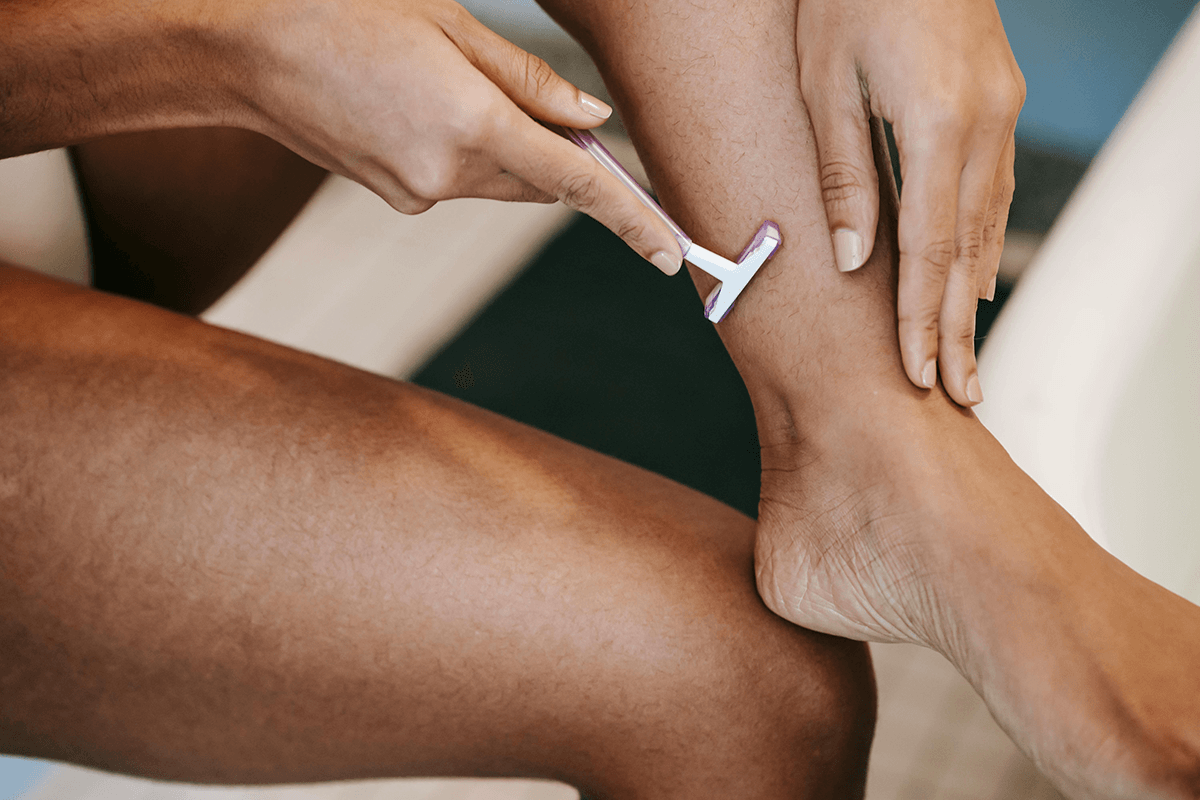Laser, wax or sugar? Choosing the right hair removal option

If shaving off hair leaves your skin bumpy and irritated, there are other hair removal treatments that might be right for you. Dr. Oyetewa Oyerinde, assistant professor of dermatology and director of the Skin of Color Clinic at Baylor College of Medicine, helps patients find the right hair removal method and offers tips on how to avoid problems when shaving.
Shaving
Shaving works by using razor blades to remove hair that has grown above the skin. Different blades will work differently and may yield different results. Multiblade razors work well for getting a close shave but can be more irritating to the skin and leave razor bumps. For patients who are getting lots of razor bumps, single-blade razors can prevent inflammation and bumps. Disposable razors are convenient for travel and convenience but dull easily. After about five uses, disposable razors are not as effective and will inefficiently shave hair. Electric razors offer multiple attachments for more body grooming options but need to be cleaned after about five shaves for cleanliness and useability.
Razors can cause irritation to the skin, so it is very important to pre-treat the skin by dampening it for a few minutes and then using a shaving gel, foam or cream to prevent damage. Shaving with just soap and water will dry out the skin and lead to more nicks and scrapes. For aftercare, rinse with cool water to reduce inflammation and apply a soothing aftershave product or a moisturizer. To prevent razor bumps, shave in the direction the hair grows (instead of “against the grain”) and make sure the skin and razor are clean. A dermatologist also may give a prescription strength anti-inflammatory cream or ointment to use after shaving for patients with razor bumps or significant irritation.
Sugaring
Though it has been around for centuries, the recent bump in popularity of sugaring has people interested in this hair removal method. Sugaring is the process of removing hair using a water-based sugar paste that becomes sticky when heated, allowing the paste to adhere to the hairs. As the paste cools, it is then pulled in short, quick motions, removing the hair in the direction that it grows. The treated spot can remain bald for about three weeks. To prepare the skin for sugaring, make sure you are not using retinoids or exfoliants on the skin for about 2-3 days before the treatment. Hair should be present and a few millimeters long to allow something for the paste to grab onto. For aftercare, keep the skin clean after the procedure and avoid exfoliants for 2-3 days as well.
“You should avoid sugaring for six months after completing isotretinoin treatment for acne,” Oyerinde said. “Sugaring leads to much longer lasting hair removal than shaving, which needs to be done every 1-3 days. Both can cause irritation to the hair follicles, but sugaring has the potential to be more painful than shaving.”
Waxing
Waxing is the process of using heated wax to remove hair. After the wax cools, it is quickly pulled off in one motion against the direction in which the hair grows. To prepare the skin for waxing, make sure you are not using retinoids or exfoliants on the skin for about 2-3 days before the treatment. The hair should be a few millimeters long to allow something for the wax to grab on to. For aftercare, keep the skin clean after the procedure and avoid exfoliants for 2-3 days as well. You should avoid waxing for six months after completing isotretinoin treatment for acne. Compared to sugaring, waxing tends to be a bit more irritating. This is because the hairs are pulled in the opposite direction of their growth and can lead to broken hair shafts. Waxing may last longer than sugaring, between 3 and 8 weeks.
Laser hair removal
Laser hair removal uses laser devices to destroy cells that have a lot of pigment. Dark hairs have a lot of pigment, which is why they respond very well to laser treatments. For this reason, hair must be present in the follicle for the laser to work. This means that you cannot wax or pluck the hairs in the intended treatment area for six weeks before a laser treatment; however, shaving ahead of a laser treatment is fine. Additionally, laser hair removal should never be performed on tanned skin because it increases the chances of having a poor cosmetic outcome. Dermatologists often recommend this treatment be done in the winter months as people are outside less and not receiving tans from the sun. Laser hair removal leads to a significant reduction of the hair but is not considered permanent. Most people need between 3 to 8 treatments and then maintenance treatments every 6 months. After laser treatments, you should make sure to keep the skin moisturized and protected from the sun with sunscreen. Laser hair removal cannot be performed on blonde, white or red hair, and people seeking to remove this color hair should consider electrolysis instead.
“Laser hair removal should never be attempted at home. Seek out a dermatologist to perform the treatment or to recommend a reputable business that can,” Oyerinde said.
Ingrown hairs
While some treatments and techniques may reduce your chances of getting ingrown hairs, they are not completely avoidable. Ingrown hairs are strands of hair that grow back into the skin instead of out on the skin’s surface. They are common after shaving or waxing because the sharp end of the hairs left by these processes can pierce the skin and start growing downwards instead of up and out. They are more common in people with thick and/or curly hair. They can be managed by using an electric shaver instead of getting a close shave with a razor and applying warm compresses to the affected skin for 15 minutes to allow the hairs to come out of the skin. Alternatively, you can stop removing the hair and allow it to grow long, which will end the ingrown hairs. Avoid picking ingrown hairs out at home, if possible, or picking with your fingers, which can make the bumps get bigger and more inflamed. If you must remove them at home, use tweezers that have been cleaned with alcohol to gently remove the ingrown hairs that can be seen on the surface of the skin. Don’t dig in the skin with the tweezers, as this can lead to infections. For patients with significant irritation, a dermatologist may give prescription strength anti-inflammatory creams or ointments or topical or oral antibiotics to help.
All the methods listed above can be used to remove hair on any part of the body if there is no serious medical issue, like product allergy or sensitive skin, that can cause more damage to the body. If you experience serious skin issues after one of these treatments, Oyerinde advises making an appointment with a board-certified dermatologist to ensure no further harm is done.
Learn more about our laser hair removal services.
By Aaron Nieto


